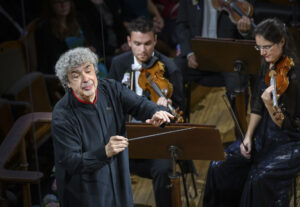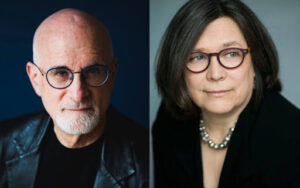
I’m usually doing a lot of coping around this time of year: As a massive tennis fan—both the watching and the playing—the season generally winds down after the (just-concluded) US Open . And as for my game? While it’s really just hitting its stride, I’ve already started planning out the indoor season. My wife and two kids, meanwhile, just want an escape—tennis or no tennis, just somewhere fun, active, un-boring.
.. and warm.

Enter the South Carolina Lowcountry. I’d been hearing about it forever from friends, and one particular part of it—Hilton Head Island—has been imprinted on my psyche since my tender years. Growing up land-locked in the midwest, I was an avid reader of Tennis magazine, and each month I’d marvel at the ads in the back for various tennis camps, tennis vacations, tennis instruction—seemingly all of which (or so I remember it) were located in this mysterious place called Hilton Head.
When I then had the chance to meet the former US Open and Wimbledon champion Stan Smith—yes, the guy with the shoe—out at the Open, and he invited me to come down to Hilton Head to hit with him, it seemed like destiny. First things first, though: The flight from New York to Savannah, Georgia is quick—two hours and small change—and a brief car ride delivered us to the Montage Palmetto Bluff . Any remaining traces of the much-overrated “real world” disappeared almost instantly the moment the car turned onto long, lazy streets cascaded with trees hanging Spanish moss.
Soon deposited into our sprawling three-story brick home (like most things here, a newish build that hearkens back to various Southern architecture tropes) in the middle of Wilson Village, we dropped our stuff and headed out to grab rental bikes and a golf cart (the main mode of transportation around the 20,000 acres—much of it a protected nature conservancy—which comprise the property, which also contains 32 miles of waterfront property). The vibe of the entire place is, of course, an extension of all that: Laid-back (but not lazy) and superbly appointed Southern luxury, the tempo slow and low, all white picket fences, riverfront cottages, porches made for napping or sipping lemonade. And while I normally bristle a bit at attempts to create complete high-end utopian environments to escape into (as opposed to finding your own creative way amid a sea of high-low options), let’s be honest: Most dream-vacation faux-communities don’t work as seamlessly, or as effortlessly, as everything does here.
There’s an impressively large Inn, replete with library, with smores-ready fire pits tucked in behind it; there’s a host of dining options, from grab-and-go casual to sit-down casual Buffalo’s—our go-to lunch spot, with freshly caught seafood and produce from the resort’s gardens—to the slightly higher-end Octagon, inside the Inn (the perfect place for, say, grownups to dine on a grilled-peach salad and shrimp and grits which keeping an eye on the kids making the aforementioned smores) to the River House (and the speakeasy hidden away below it, but more on that later). Unlike some Southern-style rambles I’ve taken elsewhere, though, despite all of the great indulgences at our disposal, I didn’t simply revert to rich, food-coma indulgences or nap-filled afternoons. Whether this is a result of having kids to entertain or simply because of the vast amount of opportunities to have some chill but active fun, we spent our days at Montage Palmetto Bluff doing stuff —our first morning saw us meet the resort’s resident naturalist, Cassie Beato, on a small, quiet Hinckley yacht for an on-board breakfast charcuterie while we learned all about the area’s abundant bird (including an assortment of owls and a bald eagle) and animal life (wild turkeys and deer, for starters) amid the maritime forest of oak and pine.
If you were to ask my children today what they most remember from our entire vacation in the Low Country, they would tell you instantly: the moment when, while looking down the May River at a dock about 100 feet ahead of us on the port side of the yacht, we saw a large alligator that seemingly clocked us approaching, stalked its way to the end of the dock, slithered in the river, and headed—seemingly!—directly toward us. I know, I know: What happened? Absolutely nothing—we never saw the gator again. If the afternoons didn’t see us climbing into and exploring a world-class rustic-chic treehouse, you’d find us in one or another of its pools.
But there’s also an amazing kind of scavenger-hunt game that kept ours busy. Basically, they check in at the Montage Merits desk in the Inn, where they’re given a lanyard and a list of things to find, or do: think “catch a fish”; “make a s’more”; or “spot an owl” (two out of three ain’t bad for starters). With each victory comes a special pin to add to the lanyard; complete the lanyard and you become a kind of Eagle Scout of the place or some such (and perhaps they throw a parade in your honor—we’ll never know, as our kids came up just short after three days).
My wife, meanwhile, earned her merits button at the sprawling Spa Montage by bravely enduring a 90-minute HydraFacial, emerging in radiant bliss. I’m leaving out, of course, my own selfish, not-so-secret reason for being there: To ready and steady my tennis game before hitting with Stan Smith. Every morning—and mornings here, particularly very early mornings, are jaw-droppingly gorgeous, the dappled warm light beyond beautiful—I hopped into our golf cart and spun over to on-site Wilson Lawn & Racquet Club, equally out of a dream, with eight Har-Tru courts, all overseen by the club’s director, Martin Aviles.
Who, truly, should be knighted, or given a kind of American-style Légion d’honneur, or something. Over the course of mere hours, Aviles—aside from overseeing a kind of bucolic and supremely at-ease tennis club out of a dream (the perfect scale, the perfect pro shop, an idyllic setting; I’ll stop here but could go on)—broke down my problematic forehand into constituent parts, improved every one of those parts, and then helped me reassemble it, fixing a nasty case of the yips with common sense and penetrating intuition. How else to celebrate on our final night—other than, of course, dropping the kids off at an inventive playspace-meets-childcare operation, Paintbox, located on the second floor of the Inn.
I assumed they were going to make some art, maybe watch a movie; I didn’t know they’d be exploring the property in the dark with their chaperone, making yet more s’mores, identifying more birds (and a few bugs), and otherwise having the time of their lives. My wife and I, meanwhile, were dining on caviar and potato chips, crab cakes, strawberries and burrata salad, and rainbow trout (did I say something earlier about a food coma?), finishing with a rhubarb cheesecake, at the resort’s flagship restaurant, River House, before sneaking down below to Hush, that speakeasy, for a nightcap. The grace note, before departing the next day, began with all of us standup paddleboarding, back on the May River.
I mean the paddleboarding was great, for sure: epic views of glassy waters and distant forest, perfect weather, perfect conditions. But that was when a handful of dolphins decided to surface just a few feet out in front of us, playing and rolling around forever as we stood back, utterly in awe. And so, on to Stan Smith—or, as his operation in nearby Hilton Head is known, the Smith Stearns Tennis Academy which, since 2002, has been working with talented junior players from around the world every day while they pursue studies and are housed elsewhere on the island.
But we weren’t being housed elsewhere on the island. We stayed just around the corner from Stan’s academy, within the massive (and historic) Sea Pines Resort , in a large three-story house (even grading on the curve that comes from New York-sized apartments, the sheer scale of this was hilarious—there were entire wings of the house that we barely ventured into) on the back nine of a golf course, mere feet away from the coast. Sea Pines has its origins in the late 1950s, when a man named Charles Fraser—inspired by the harbor of Portofino, Italy—set about attracting a new kind of tourism that prioritized environmental concerns and focused on active recreation, both novel concepts at the time.
(Fraser also encouraged his employees to picnic with their families and play tennis in the middle of the day, among many other forward-thinking qualities.) When Fraser caught the 1970s golf and tennis boom earlier than almost anyone else, Sea Pines quickly became known as a pioneer in development, influencing the design and management of resorts around the world. Today, Sea Pines retains this laid-back, out-of-time ambiance—more Spanish moss, more glistening light between towering live oaks—while providing the resolutely of-the-moment comforts of luxury homes scattered across 5,000 acres (or a smorgasbord of room options at the Inn & Club at Harbourtown, more centrally located amidst dining and entertainment options).
We showed up to find an array of bicycles—each sized perfectly for each member of the family—in a rack outside the house, and within minutes I was helping my son learn to ride his bike (and avoid those pesky alligators that he feared but that we, thankfully, never saw) on the paths winding around that golf course. In the late afternoon, we all jumped into the nearby pool, which—save one solitary figure—we had to ourselves. Once dried off, we headed down to the local marina and climbed aboard an 80-foot motor yacht, Top Shelf , for a sunset dinner cruise around the local waters.
Heading out of the estuary, we spotted scores and scores of dolphins behind us, jumping into the sun and disappearing again. Before dinner, with a vague kind of adult supervision and perhaps a blessing, I performed a ceremonial leap from atop the yacht’s roof into the sea far down below; emerging unscathed, I then declared it dinner time. (Steaks for me, sea bass for my wife, and the world’s greatest chicken nuggets for the kids.
) Unsuprisingly, everybody slept very well that night. The next morning, Hilton Head Social Bakery —a French bakery on a Southern resort island—delivered a basket full of croissants and tarts and brioche, the rest of the family headed off to the pool, and I walked over to see Stan Smith. There may never be a man better suited to his environs than Smith—upon early inspection one of the world’s most mellow, most affable, and most accomplished men—seemed to be suited to Sea Pines.
“I just came down once and fell in love with the place, like everybody does,” Smith told me when I asked how he ended up here. “I signed as a touring pro at Sea Pines Resort, and I've been that ever since—and then we started this academy 20 years ago. Our goal is to get our kids to a college that’s appropriate for their tennis and their academics—we’ve had Ivy Leaguers; we’ve had players going to the very, very highest tennis-level schools.
∏ (One of those players, Jessie Pegula, has been doing okay—she played in the US Open final this year and is one of the best women in the world.) Aside from his Adidas-related fame (his acclaimed recent book, Some People Think I’m A Shoe , with a foreword by Pharrell Williams, is gorgeous and revelatory), Smith’s life as a tennis pro spans an incredible, historic period in the game: He’s played Don Budge, René Lacoste, and Fred Perry and Jimmy Connors, Boris Becker, and John McEnroe. Now, though, he’s about to play me—far removed from my boyhood life playing tennis 24/7, I’m now one of those once-a-week scramblers still madly in love with the game even if their strokes aren’t quite scaring anyone anymore.
As we walk out to the courts at the academy, I ask him if there’s one big thing that he’s diagnosed after teaching kids for decades how to play better—some magic secret or inside information that he could pass on. “The biggest problem,” he told me, with a straight face, “is that people aren’t playing every day. And if you're not playing a lot and not in great shape, after a while things are going to break down.
” I’ll spare you a retelling of what happened out on the court with Smith. Suffice to say that his easygoing nature—and his extreme expertise—were on regular display, saving both my ego and my vanity, and that I learned to tweak some fundamental aspects of my game from a former number-one-in-the-world champion, who seemed to never cease smiling. My son—he normally shies away from playing—even showed up from the nearby pool to hit with another teaching member of the Smith Stearns staff on an adjacent court.
Soon my wife and daughter—neither of them tennis fans—showed up as well, and we all found ourselves on the court with Smith, chatting and swinging. I mean, sure—my kids still think of him now as the shoe guy. But one day they’ll understand?.














